Fountains for summer cottages: varieties of forms and decor

Decorative ponds have long ceased to be the prerogative of only wealthy people. Today, everyone is able to ennoble their site with the help of a miniature fountain or pond. In stores, you can find both ready-made solutions and the necessary parts to create your own exclusive device.
Peculiarities
The main goal of any fountain structure (park, summer cottage, indoor) is to make water move. However, a simple movement will not suit us, of course. Water flows must create a beautiful, attractive picture, controlled and guided. A barely noticeable current in the pond, a spring breaking through the stones, a chaotic interweaving of jets in some compositions - all this is subordinated to a complex system of nozzles and pumps.
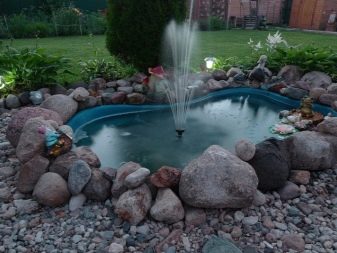
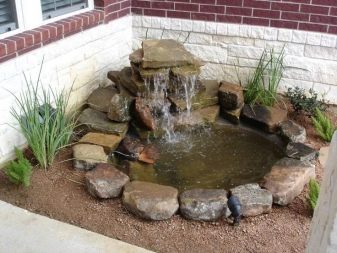
When designing a street fountain for a country house, you should consider what source of water will be used. If it is natural, for example, a lake or a river, then the amount of water will be sufficient to create powerful multistage structures. If these are not available, then the system is connected to the water supply network. The functionality of the fountain in this case is accordingly limited.
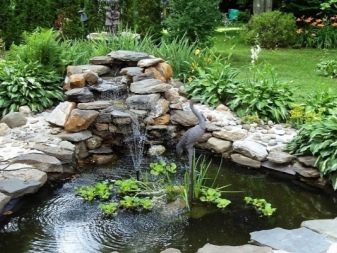
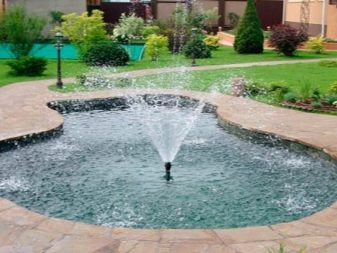
Device
The choice of a fountain for a summer residence depends on the size of the territory, the features of the relief, the pump power, the desired water pattern, materials, the general concept of a winter or summer garden.
All types of fountain devices combine several basic elements: reservoir, pump and nozzle (nozzle). Bowls can be purchased ready-made from metal, plastic, stone, or you can build them right in the ground, giving the desired shape.
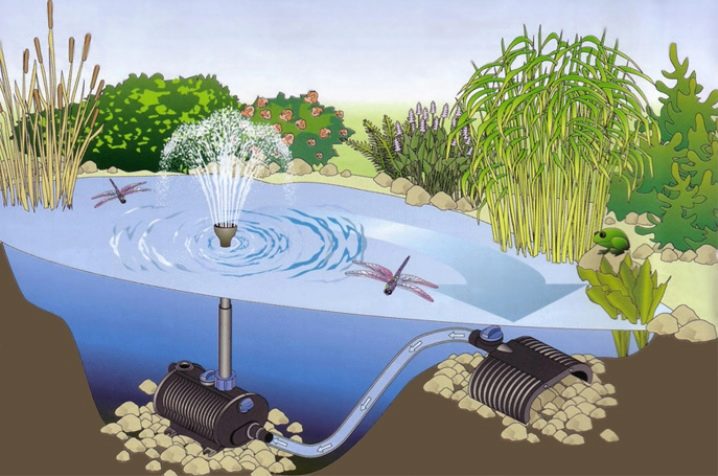
Next, you need to decide on the water picture and, based on this, choose nozzles or their combinations. Well, do not forget about the driving force of any fountain - the pump.
They are of two types - submersible and surface. The first, as the name implies, is installed under water. Its installation is simple, but for maintenance it must be constantly caught, which is not very convenient. The second is located outside the water structure, due to which it is easily accessible for repairs.
All other structural elements are designed to decorate and facilitate the management and maintenance of the fountain. For example, a water purification and filtration system will prevent a reservoir from blooming and turning into a swamp.
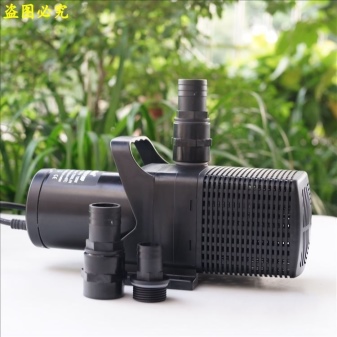

Lighting is already part of the decor. The main secret of fabulous evening lighting is to highlight the brightest elements of the composition and shade the rest. In the dancing fountains loved by everyone, the completeness of the composition is achieved precisely by high-quality lighting.
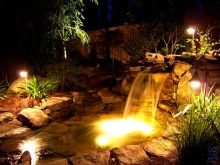
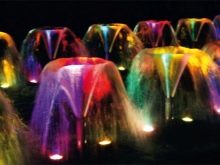
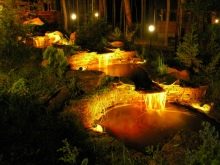
Views
Despite the constant development and sophistication of fountain systems, they can still be classified according to several principles.
According to the general architectural solution, it is customary to distinguish:
- A group whose composition is based on water streams.
- The next view combines options where the main role is given to architectural elements. Water is secondary in this case.
- The third group is a harmonious ensemble of water and art parts.

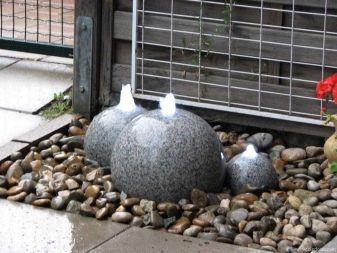
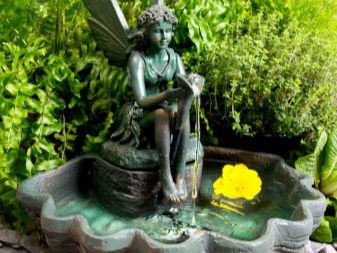
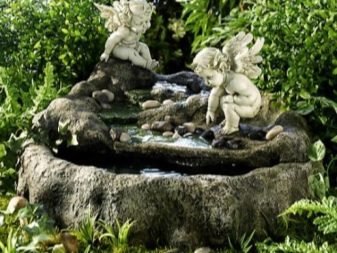
By location, they are distinguished:
- On a large body of water of natural or artificial origin.
- On land in a small decorative pond.
- Indoors: rooms, winter gardens, loggias.
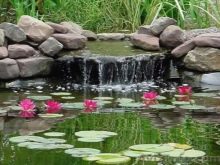
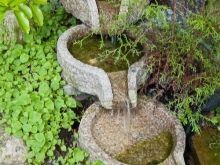
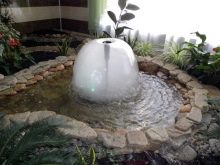
By the form of water supply:
- Most often occurs jet fountain... A vertical thin jet is formed by converging nozzles. Its height depends on the water pressure.
- "Bell". The nozzle is a tube with a length of 0.5-1.5 m, which ends with two spherical disks located on top of each other. Water escaping under pressure from the gap between them takes the shape of a dome.
- Fountain "hemispheres" consists of mini bell-type nozzles. They are fixed at an angle so that the flow of each of them forms part of the hemisphere wall.
- "Tulip". As in the previous two versions, the flow is regulated by two discs with the only difference that the water does not come out horizontally, but rises upwards at an angle of 30-40 degrees. At the same time, a funnel expanding to the top forms in the center, and a water film falls in a circle, resembling a flower.
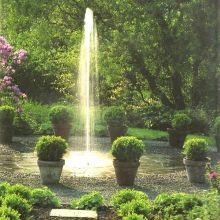
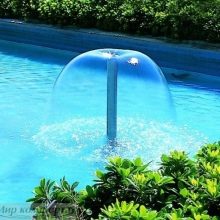
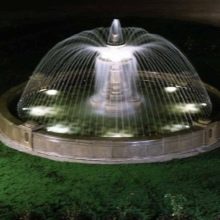
- "Fish tail". His drawing has common features with a tulip, but the flow of water does not form a solid wall, but consists of separate jets. This effect is produced by several nozzles located in the center in the form of a fan at an angle of 30-40 degrees.
- Tiffany - combining the types "bell" and "fishtail". A mesmerizing picture is achieved due to the difference in pressure. As a rule, it is larger in the "bell" node.
- Fountain type drawing "ring" provides a pipe, closed in a circle, in which holes for water outlet are located at an equal distance, into which jet-type nozzles are installed.
- The single atomizer is similar in design to "fish tail", but with the difference that water comes out of more nozzles at a lower angle (15-20 degrees). A more sophisticated variation is the line sprayer. The desired effect is achieved by increasing the water pressure from the extreme to the central holes. If there is no desire to "play" with the pressure, then multi-stage spraying is obtained by means of nozzles of different diameters.
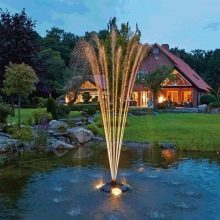
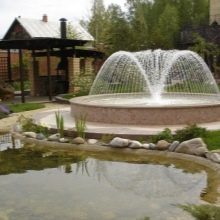
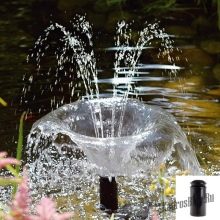
- Fountain type "Spinner" creates the feeling of dancing jets. The sprayers are mounted on a rotating base. During its movement, initially vertical jets twist into intricate spirals. The main subtlety is to find a balance between water pressure and rotation speed.
- You can often find fountains-keys and key-stones... In the first case, the nozzle is installed under the water column. To create the second type, a hole with a diameter of 2.5 cm is made in natural stone, where a hose is inserted. Adjusting the pressure allows you to achieve the height of the post required for a natural imitation of a spring beating from the bottom or from a hole in the stone.
- Fountain-waterfall, unlike other types, does not depend on the type of nozzles or the pressure in the system. The water does not tend upward in the form of jets, but flows down in a multi-layer stream along the base. Therefore, the nature of the mini-waterfall will depend on the height and relief of the base.
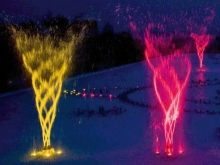
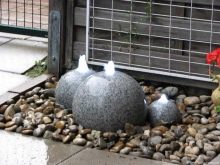
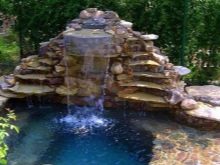
The above types of fountains are basic. In their pure form, they can be found in interiors or in small areas. But their various combinations make up the most impressive aquatic compositions. For example, the famous Pyramid fountain in Peterhof consists of 505 jet nozzles. Due to the difference in pressure in them, water jets rise to different heights, forming a pyramid.
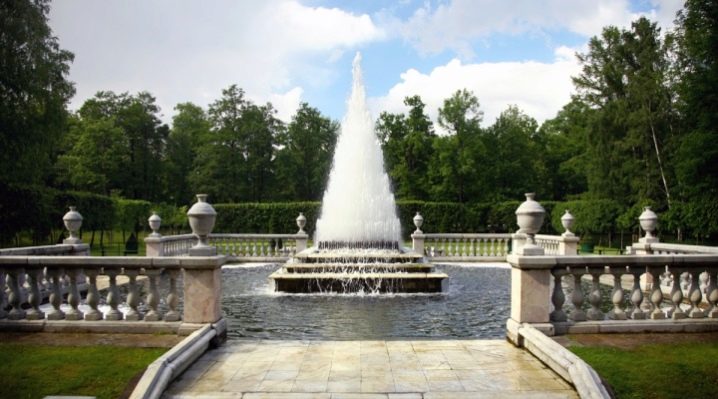
If we talk about the forms of fountains, then the options here are limited only by imagination and the general style of the garden. Hemispherical bowls decorated with various sculptures are classics of the genre. Lovers of aristocratic luxury will like lion heads and cupids.
Simple and laconic forms will be an excellent option if pretentiousness and pomp are not held in high esteem. Well, options for an unusual shape will help to stand out in the general mass of water flow lovers.
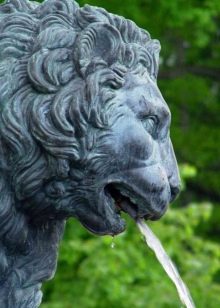
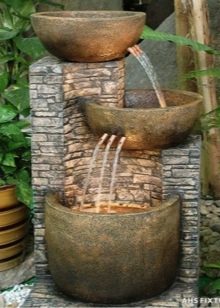
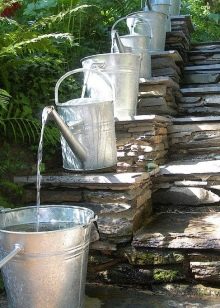
Dimensions (edit)
The choice of the size of the fountain primarily depends on the installation location. Accordingly, for a garden or summer cottage, models no more than 3 m in diameter are suitable. Parks and squares can accommodate swimming pools from 4 meters, but the interior options will be quite miniature.
The surrounding space should also be kept in mind.
A small fountain in a spacious area will get lost (unless this is conceived by the general concept of the garden), and large models in a small courtyard will look ridiculous.
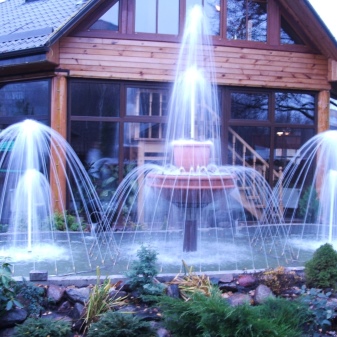

It is very important to take into account the correspondence of the height and pattern of the jets to the diameter of the bowl. And the point here is not only that the water should not splash out, but also in a harmonious form. If a fountain device is purchased for a garden, then the size will depend on the plants available, especially if they do not like moisture too much. The fountain should be installed away from such types, as well as from the walls of the house and other non-moisture resistant decor.
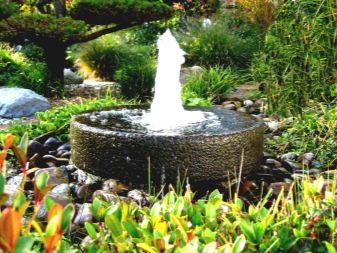
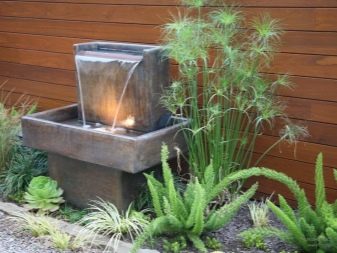
Materials (edit)
On sale you can find ready-made fountain installations, which include a bowl and are fully equipped with equipment. All that needs to be done is to choose the place of the future fountain and connect it according to the instructions, having previously connected the communications there. This will most likely require pipes and an electrical cable.
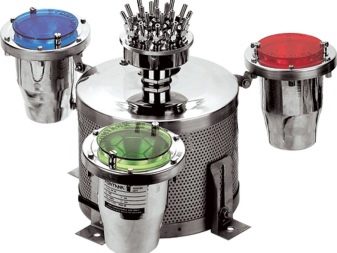
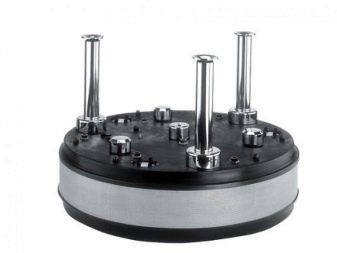
If ready-made solutions do not suit you, then in addition to pipes with cables, you should stock up on cement, sand, gravel and patience. The presence of a waterproof container of the required volume will speed up the work on arranging the bowl. Otherwise, the tank will be filled with concrete and here it is necessary to attend to good waterproofing. You can follow the example of the craftsmen who make the base from tires and cover the bottom with dense polyethylene instead of concreting. The only drawback of such a solution is the limited service life of the film (up to a year).
If the entire composition or individual elements of the decor are stone, then they need to be prepared in advance. Various imitations of stone are a good option, they are resistant to moisture and last longer.
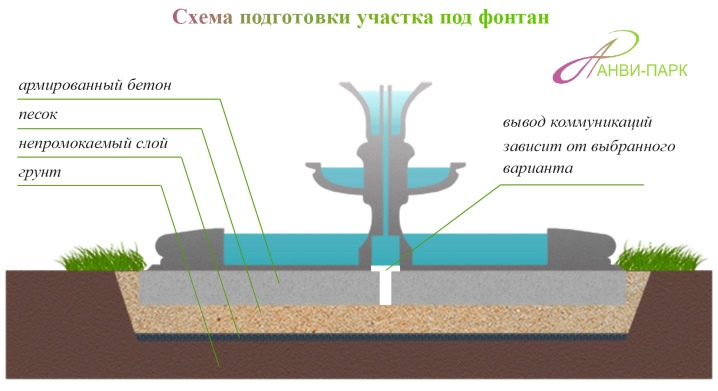
Decor options
As for the issue of decoration, here the main adviser is imagination and taste, well, and a little bit of a wallet.
But a few things are worth noting:
- Polystone models do not require additional decorations; as a rule, they are self-sufficient and laconic.
- Any stones are suitable for decoration - small cobblestones, large pebbles, granite. They can be used to equip a border around the perimeter of the bowl. The border of large untreated stones, on which moss and fern grow, looks very natural.
- So that the decorative pile of stones does not look ridiculous, no more than two different species should be used.
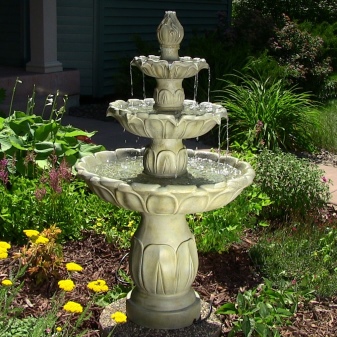

- Aquatic and coastal plants will add completeness and naturalness to the structure.
- If the project includes living creatures in the form of fish, it is important to make sure that the selected breed can safely tolerate the noise of the water.
- Sculptures and decorative grottoes and caves are another way to aesthetically equip a summer cottage. And if the grottoes look quite natural, then with the caves you need to know when to stop.
- Ceramic tiles as cladding allow you to create striking individual ornaments and paintings. Such a fountain will perfectly complement a Mediterranean-style garden.
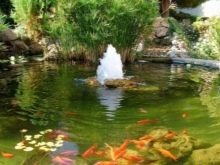
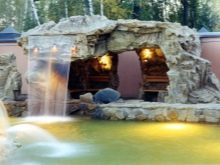

What to consider when choosing?
So, the data has been collected, and your hands are itching to get down to business, but first you should systematize the knowledge gained:
- The size of the fountain should be optimal in terms of its purpose, area of the site, surrounding vegetation and buildings.
- Matching the size of the bowl to the height and power of water flows will avoid flooding the surrounding soil.
- The pump power depends on the type of fountain. The more power, the higher the jet.
- When choosing nozzles, it is better to pay attention to the material, and not to the price. Cheap plastic models are short-lived. Closer to ideal specimens from steel, brass or aluminum bronze.
- It is important to take into account such an indicator as the wind resistance of the nozzle. Otherwise, the conceived picture will delight only in calm weather.
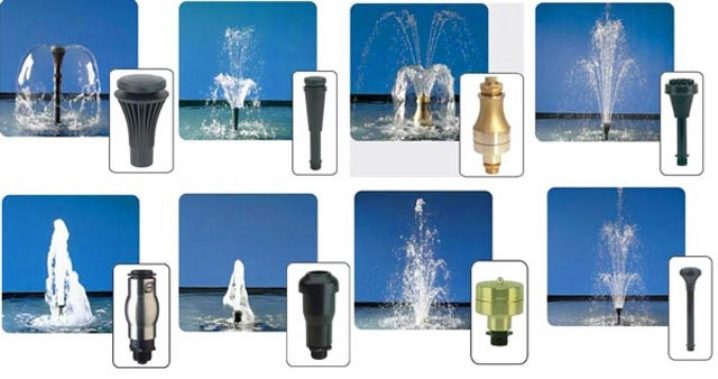
How to do it?
A master class with a step-by-step guide to creating various types of fountains is the topic of a separate article and even a series.
We will focus on several main stages:
- Any construction, from a fountain to a skyscraper, begins with design.At this stage, design and construction projects are developed. Careful study of all details - from the choice of location to finishing decorative finishing, will facilitate and speed up the installation.
- The next step, the selection of equipment and materials, flows smoothly from the previous one.
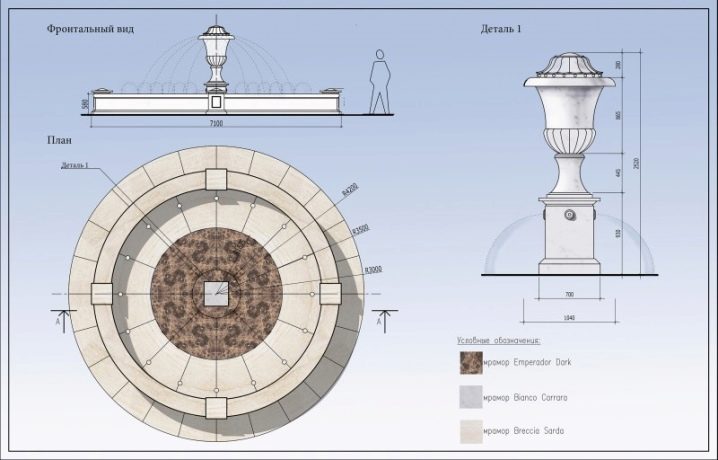
Further, in fact, construction work:
- Preparation of the base. The simplest home-based method is film technology. You can also dig a rigid plastic or metal mold into the ground. Well, the most laborious is a concrete bowl;
- Installation of sprayers;
- Setting the driving force - pump. There is not much to choose here - either submersible or "dry". For the needs of a small suburban structure, the first is perfect;
- Setting the backlight;
- Filling with water and checking the operation of the system;
- Decorating.


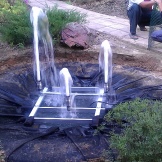
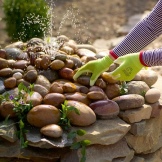
Care
Building a fountain is half the battle. Any structure, regardless of type and system, needs careful maintenance. It is important to maintain the correct water level at all times to avoid equipment malfunctions and breakdowns. This is especially true for models with a closed system, since the water in them evaporates naturally.
The bloom of water can completely kill all the beauty of the structure, and the smell exuded at the same time is not pleasant.
There are several options for dealing with the problem:
- regular DIY cleaning with water change;
- installation of multi-stage filters;
- chemical cleaning, it is unsafe for flora and fauna (if any);
- biological cleaning - aquatic plants, crayfish and some types of fish, microorganisms.
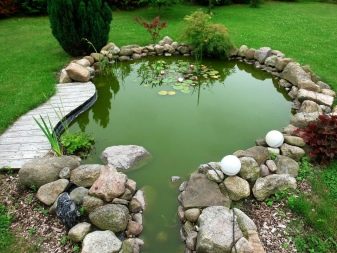

Regular cleaning of pumps, nozzles and other equipment will significantly extend their life. For the winter, the water is completely drained, the equipment is dismantled, and the fountain is covered with a protective film. If cracks are found, the surface is treated with waterproofing materials.
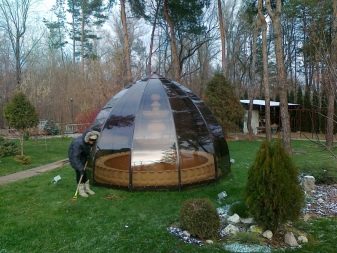
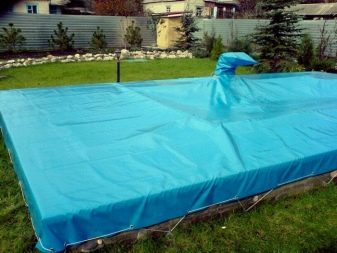
Beautiful landscaping designs
Any landscape decorated with a fountain will take on a zest, be it a charming seating area in a small courtyard or larger compositions.
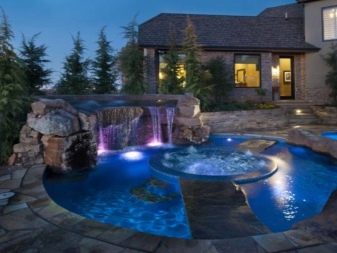
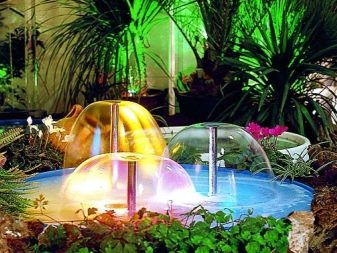
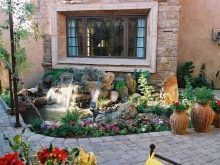

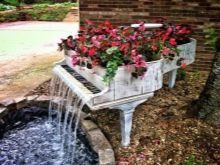
For even more ideas for arranging fountains for summer cottages, see the video.



































































The comment was sent successfully.